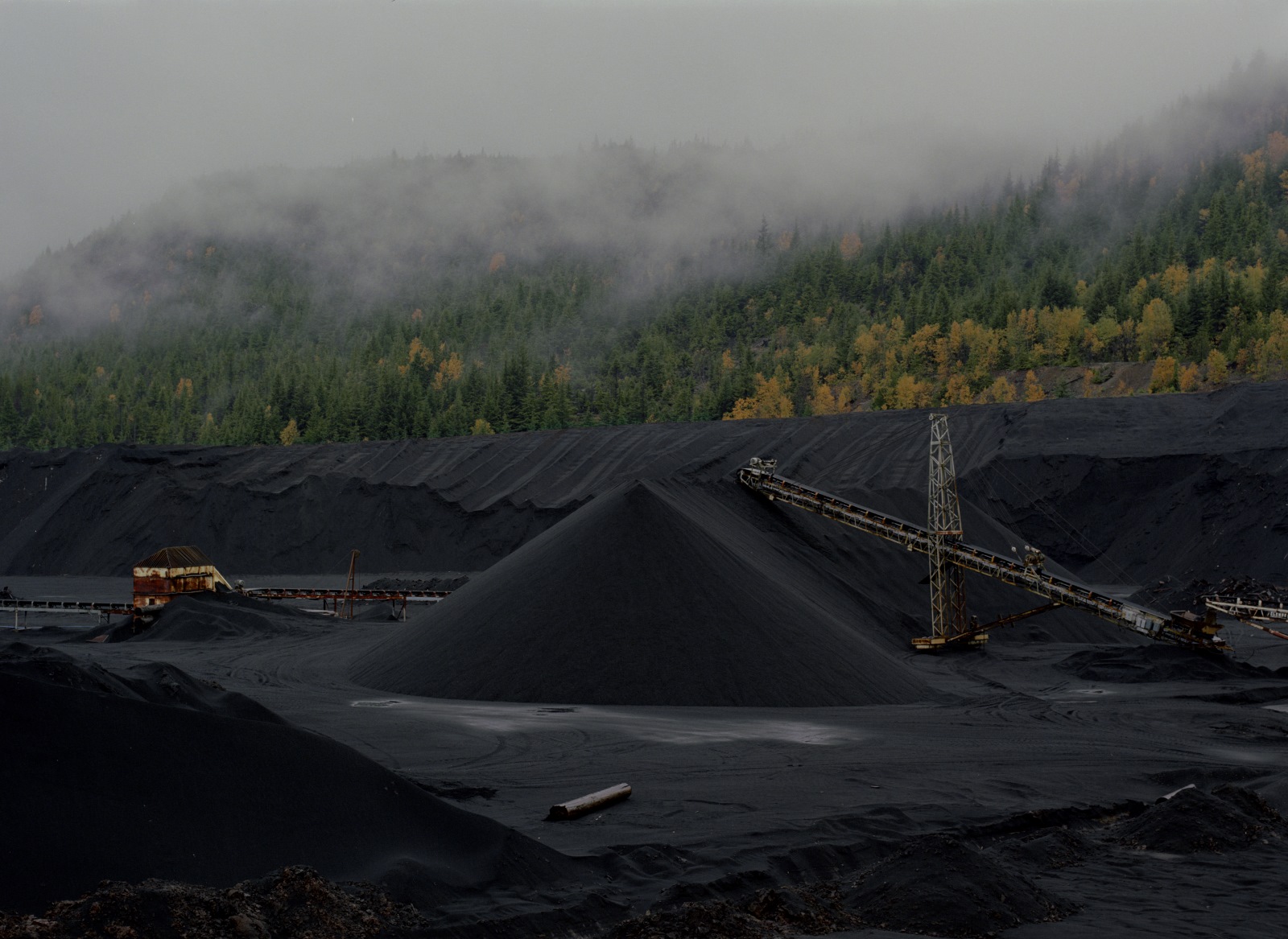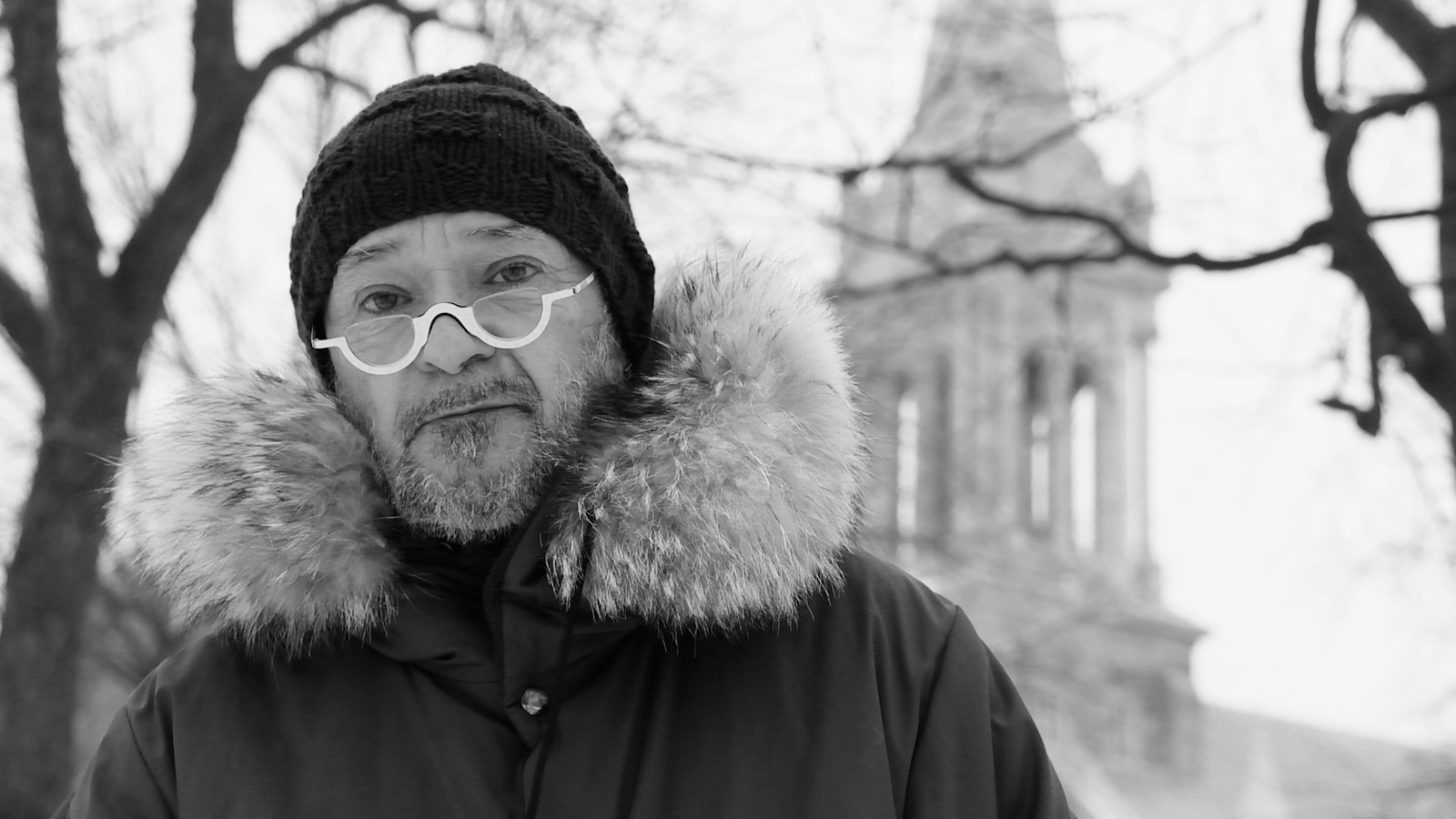“We’ve explored many parts of B.C. and, as we’ve studied this topic, we’ve learned that many parts of B.C. and Canada are based on resource extraction, but some locations never turned into modern towns and cities, whereas other resource extraction hubs in the province did,” notes Anyox director Ryan Ermacora. “Anyox is an example of resource extraction hubs that grew to quite a large size and then quickly died off when the resources were no longer profitable for the corporation.”
Anyox marks the first feature documentary for the Vancouver-based duo of Ryan Ermacora and Jessica Johnson. It continues their oeuvre of pensive arthouse documentary shorts that explore the Canadian landscape and the history of labour rights that are often intertwined in Canada’s geography. Anyox explores the titular town in British Columbia, which had a population of approximately 3000 people in its heyday. However, after business at the copper mine collapsed and a historic workers’ strike brought the once-prosperous town to a violent end, Anyox endures as a ghost town. Its currently population is two people. Their names are Lyle and Linda.
Ermacora and Johnson aren’t especially interested in what the current residents are up to. Their eyes instead turn towards the slag pile that towers nearby. The filmmakers say they were tipped off to the location by their friend David Ehrenreich, and found it to a perfect continuation for their body of work. “Anyox is a micro-version of this story that we’re still living in today,” explains Ermacora on the visible evidence of a town abandoned by dwindling corporate interest. “Anyox was immediately visually interesting because the mountain has been carved out and all the refuse is visible as the slag pile on the beach. That slag pile is the entry point: It’s a visual metaphor left on the landscape.”
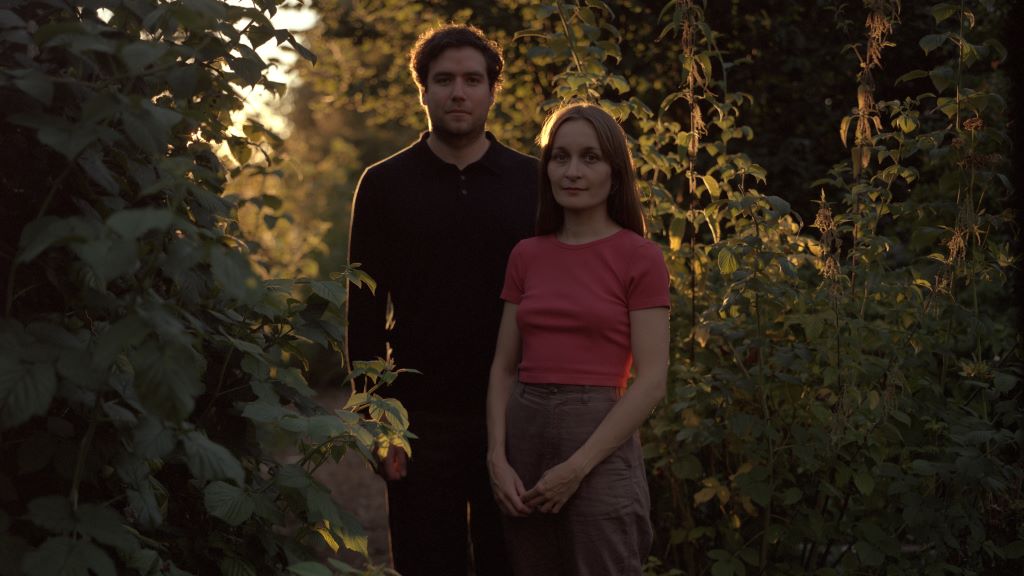
Getting the Lay of the Land
Johnson says that most of their films, which include the shorts Labour/Leisure, Empire Valley, Hazel Isle, and Ocean Falls, start from a place similar to Anyox where landscapes of note arise in conversation. However, the film differs from their body of shorts given the rich history and archival elements that inform it. “Anyox was interesting because we did research throughout the entire process of making the film,” explains Johnson. “It was a shape-shifter throughout the edit and the shooting.”
The duo’s research phase also involves preliminary location scouting and photography so they can get a visual sense of their future subjects. “We do location scouting where we develop a structure and a language that we want to explore with the work, and usually we do that through photography,” notes Ermacora. “Then we’ll figure out how we should translate this location into a motion picture.”
In the case of Anyox, the town comes to life through Ermacora and Johnson’s signature series of tableaux shots. Long takes observe the land while capturing rocks, rushing waters, and remnants of a mining town haunted by the ghosts of capitalism. A few shots show the life that endures in the town as Linda and Lyle go about their business.
Archival images, meanwhile, reveal old time mining in action with some exquisite footage shot from the belly of caves long ago. Still images scroll through newspaper clippings on microfilm as the story of the 1933 miners’ strike unfolds. Reports highlight the poor sleeping quarters where miners stayed. News articles share their demands, like a daily wage increase of fifty cents, adequate housing, and reduced lodging rates. The newspapers advise of a “red scare” and a “calamity in the north” while noting how the cavalry came to town in the form of the RCMP.
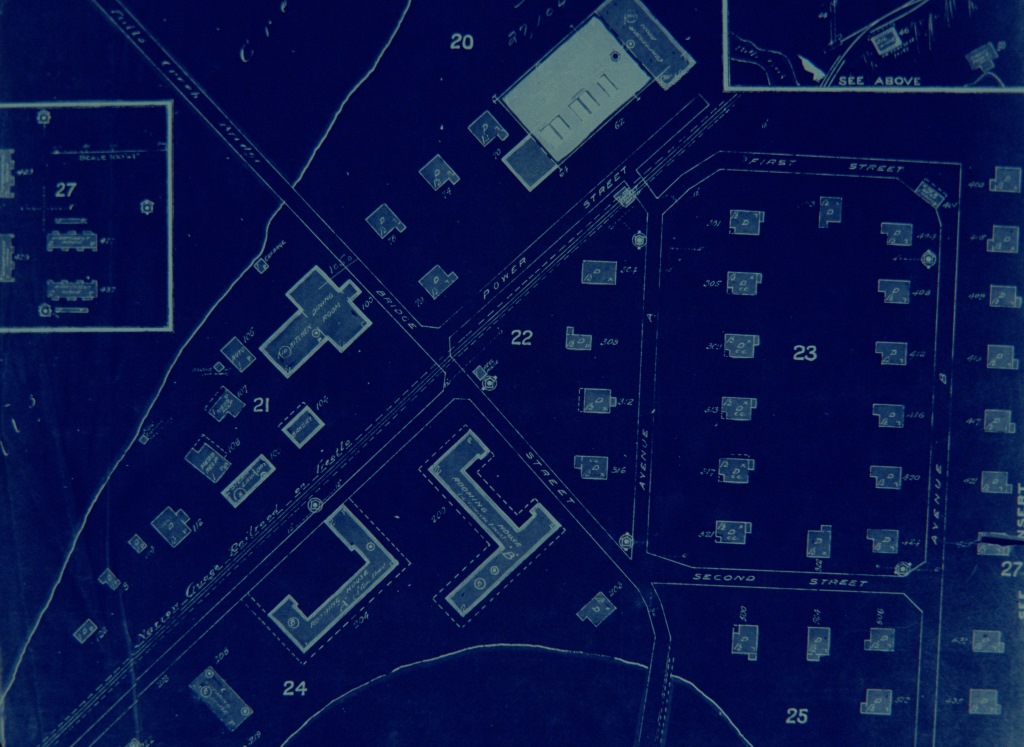
Digging into the archives
The filmmakers said the archival material required little restoration thanks to the resources at Library and Archives Canada, which they mined for riches. “We travelled there and viewed the films on VHS rips and old DVD copies that had been transferred in the ’80s but not fully digitized,” explains Johnson. “Sometimes they would create an inter-positive with the negatives that they could then scan.”
Actually getting the right materials required a fair bit of mining though. Johnson says that some of the best finds actually came by following through with footnotes in books. Meanwhile, nitrate film originals were often lost or destroyed. Other times, it was a matter of scouring databases with the right key words and following up on a hit that was logged in 1960s, but never transferred from the original format. “There was some really beautiful stuff that we found sight unseen just by requesting a scan of something that was not presently available to be looked at,” notes Ermacora.
In some cases, the filmmakers encountered roadblocks given the limited material from Anyox and the early days of Canadian cinema. Especially elusive was the 1918 film Anyox: The Story of Copper by Arthur David Kean, a self-proclaimed kino “cowboy” who was an early chronicler of Canada’s west, controversially so, which makes the images that Anyox does offer especially notable for Canada’s early filmic history. “We met with multiple archivists; we met with Dennis Duffy, who spent 30 years writing a book about this cinematographer,” explains Johnson. “We went on a wild chase to try to find this film and never did, so eventually we had to replicate what we had read about it. That motivated some of our work, especially with the editing, in the mining segment.”
Searching for Kean
Kean’s footage from The Story of Copper, the filmmakers note, supposedly had the first images shot underground in the caves. “But from our research, it really appears they’ve all been lost,” notes Ermacora. “One may have ended up in an NFB archive, which had a fire. Almost none of his films exist.”
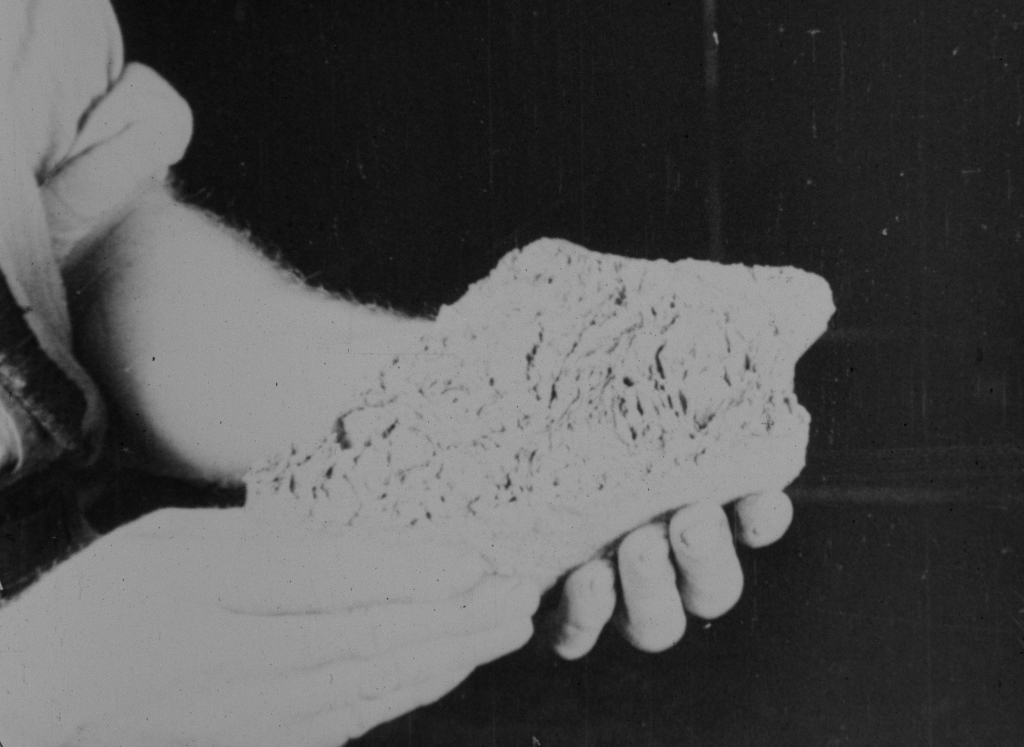
The duo says they did some reconnaissance around Anyox in search of buried treasure à la Dawson City: Frozen Time, but found no gold. “On our first scout to Anyox, we asked our guide Rob Bryce to take us to where the cinema had been,” says Johnson.
“There are bricks scattered around and there was a concrete-like foundation with a room that we believe may have been a projection booth because those were often like insulated,” adds Ermacora. “We were digging around looking for a can, but we never found a can of film.”
Shooting in 65
It makes sense that the filmmakers have an affinity for celluloid since the rich images of Anyox were shot on 35mm and 65mm film—rare, if appropriate, aesthetic choices in a medium that’s all but gone digital. Anyox, which received funding from Telefilm Canada’s Talent to Watch program, is a unique case of an experimental documentary scoring financing from Canada’s feature film funder, which generally backs commercial works. (Anyox also received support from the Canada Council for the Arts.)
“I don’t know if we’ll ever get Telefilm again for a project like this,” admits Ermacora. “I think we snuck in at an opportune moment with Talent to Watch.” But that the funders see the artistic merits of 35mm and 65mm experimental documentary also speaks to the duo’s uniqueness in the Canadian landscape: Despite the popularity of docs like Anthropocene or KONELINE, few filmmakers of their generation make this kind of large-format immersive work.
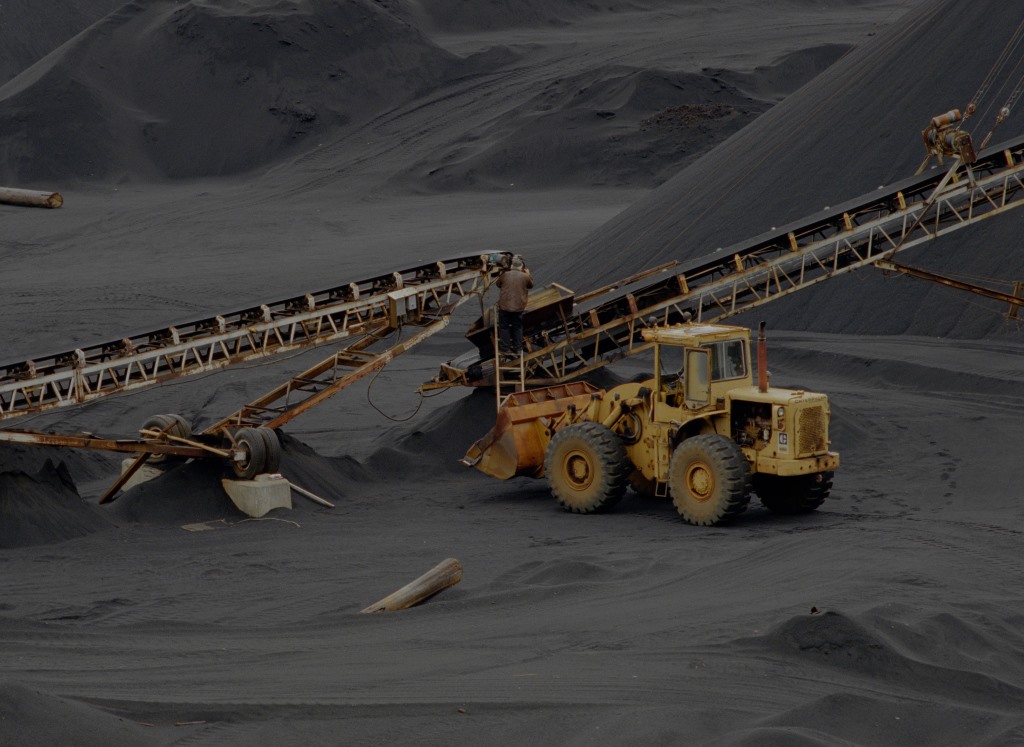
Ermacora says that their production style facilitates shooting on film with small crews and even smaller shooting ratios: teams of four to five crew members and a shooting ratio of 3:1 in the case of Anyox. “We only shoot when we really think something is worth shooting,” observes Ermacora. “That’s where the photography during scouting comes in: we figure out what we want and we spend a good amount of time in the location so that we can figure out what works and whether the lighting makes sense.”
Besides tempering the production and inspiring early creative decisions, shooting on film speaks to the aesthetics of Ermacora and Johnson’s work and the history that informs it. The textures of the rocks, the shades of lighting, and grains of the landscape simply don’t have the same effect in digital cinematography.
The Magnitude of All Things
But Anyox is also as tailor-made for the big screen as docs like Fire of Love and Watermark as the 65mm frames simply capture the scope of the land with the grandeur it deserves. “One reason for shooting on 65 is that we found all these large format photographs that were taken of the town,” explains Ermacora. “They have so much detail and they’re very beautiful, but they also try to represent the town in a good light, either for investors or to attract workers to come live in the town. The landscape’s been devastated and the hillside is completely dead because the smelter fumes killed all the trees.”
Framing the landscape anew, however, Anyox counters the historical narrative by capturing the land in context. Whereas historical shots try to hide the scorched tree-line while highlighting the beauty of the mountainside, they capture Anyox as it is: greenery, slag pile, and all.
“We wanted to create chapter headers throughout the film that were shot on 65mm that represented these places where severe environmental damage occurred and then shoot it in a way that was similar to the large format photographs, but doing it in the present as motion picture,” says Ermacora. “We’re showing remnants of what damage that industry caused and specifically places where heavy historical events occurred that may not necessarily be visible to the audience.”
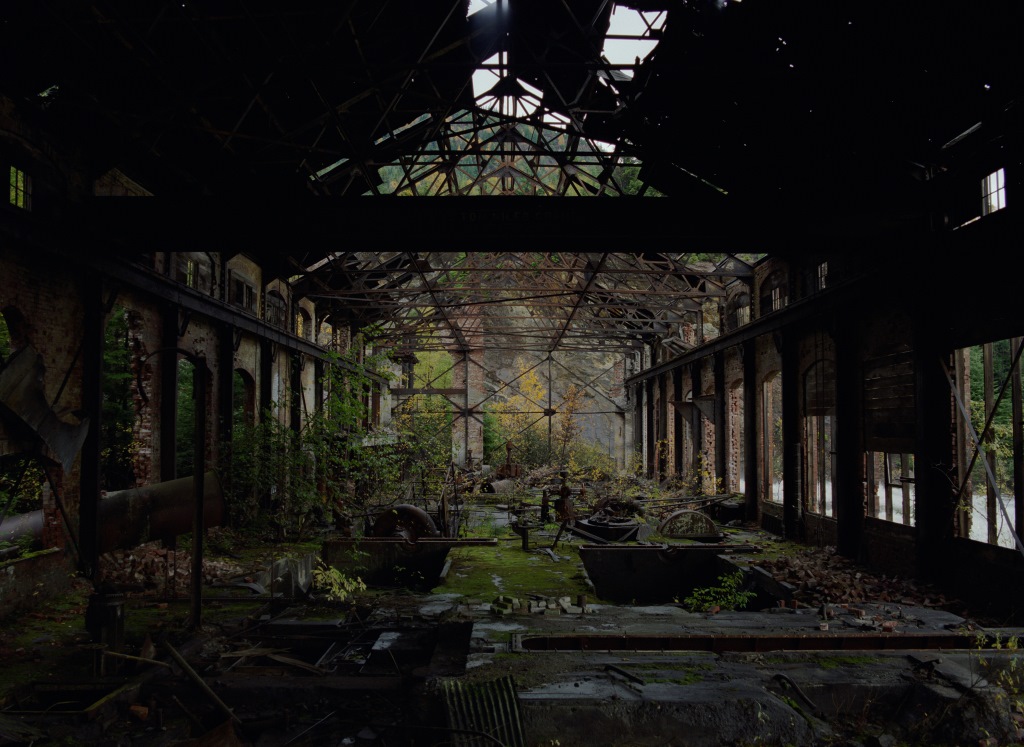
Environmentalism Meets Structuralism
While Anyox explores the destruction of the landscape through this structuralist aesthetic, it isn’t a work of “environmental cinema” per se. Where eco docs often favour straightforward didactic approaches in service of a call to action, Ermacora and Johnson recognize environmental elements of their films but resist the label. “Our approach assumes that our audience is intelligent and is able to consider what they are looking at and make their own assessments,” says Ermacora. “I think anyone watching our film would be disturbed by the environmental damage that the mining industry has done in Anyox.”
Audiences can engage with these images that play off the large format photography through the long takes that invite audiences to spend time in Anyox’s surroundings. Anyox, like Ermacora and Johnson’s short works, draws upon techniques of durational cinema, aka slow cinema. Measured pacing allows a viewer to linger in the frame and study cinematographer Jeremy Cox’s controlled compositions like one would a painting in the gallery. On one hand, the active viewing requires patience that lends itself well to the landscape genre. Similarly, by immersing oneself in the many elements that create each frame, one observes the beauty and devastation that co-exists in sites of resource extraction.
Embracing the “Rear-guard”
The filmmakers note that durational cinema offers an extension of their photography work. But they see Anyox in the tradition of filmmakers like Sharon Lockhart, who blur the line between film and photography. “There’s an assumption of progress in the history of cinema that filmmaking is based on storytelling,” observes Ermacora.
“When you look at early cinema, it’s not always based on storytelling,” he continues. “Sometimes it’s just a depiction of a form of labour, like a shot of labour until the film roll runs out. Or it would be a train ride. There are many examples of early cinema experiments that don’t tell a story per se. When we studied film history, people often talked about how early cinema was wedded to photography or theater and it needed to find its own language. We’re interested in staying in that early area of exploration. We find it a fruitful area to explore and create immersive films that are rooted in structure as opposed to rooted in a story arc.”
Johnson likens their work to experimental filmmaker Peter Hutton’s classification of his own landscape portraits as “rear-guard cinema”—a flipside of avant-garde that experiments with traditional methods—or Scott MacDonald’s writing on eco cinema. “I like the long take’s ability to make the viewer become bored. It invites all these mental processes before they return to the image,” notes Johnson. “Through duration, there is an active viewing experience. In terms of representing landscapes, we often have no idea what we’re beholding, about history and ecology. Hopefully it gives a moment of self-awareness or critical self-reflection reflection on the material that we’re viewing.” For audiences able to encounter Anyox on the big screen, and be immersed in its striking images, there’s a full history to behold as the landscape reveals itself.
Anyox screens at Vancouver Cinematheque on May 18, 20, and 22.
It screens in Toronto at TIFF Bell Lightbox on May 25.




